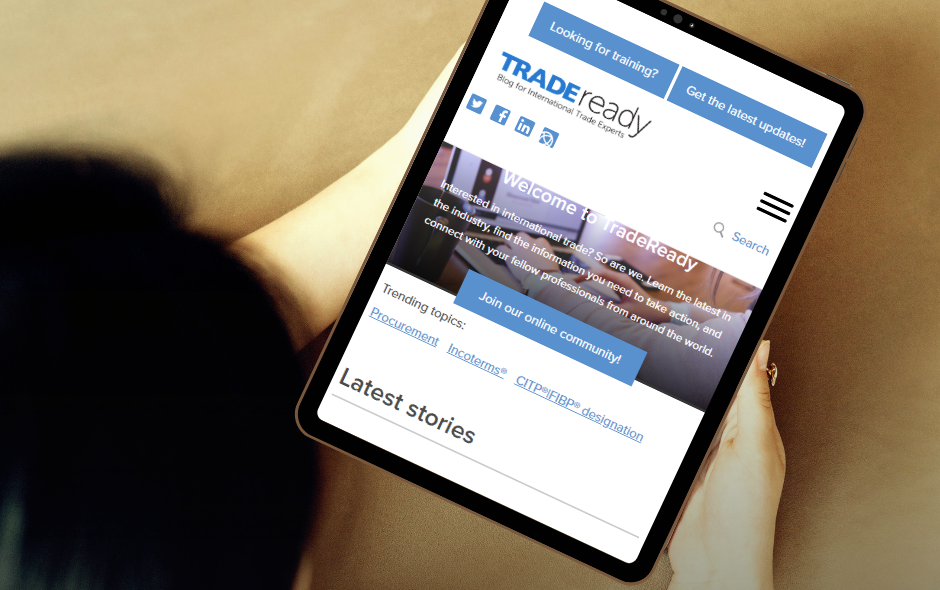It’s not mandatory to use a Canada-United States-Mexico Agreement (CUSMA) form when filing a free-duty claim for your products at the border. This wasn’t a mandatory requirement under the North American Free Trade Agreement (NAFTA), and it isn’t under the new trade agreement.
But what is CUSMA, and why is it necessary? If you export or import goods within the North American trading block, you need to familiarize yourself with CUSMA and discover how it can benefit your business.
What Is CUSMA?
As noted above, CUSMA is a new trade agreement between Canada, the United States, and Mexico. This agreement came into force in July 2020 as a substitute for NAFTA. The main aim of creating CUSMA was to liberalize trade in North America and do away with the existing trade barriers and unfavorable tariffs.
Same Treaty, Different Names
The new treaty has several acronyms depending on your country of residence. For instance, ‘CUSMA’ is commonly used in Canada, while the US refers to the treaty as the ‘United States-Mexico-Canada Agreement’ (USMCA) and Mexico refers to it as the ‘Tratado entre México, Estados Unidos y Canadá’ (T-MEC).
Whether you refer to CUSMA or USMCA when you’re filing a duty-free claim, you’ll be subjected to the same rules of origin. Although the acronyms appear different, they refer to the same trade agreement.
What Does CUSMA Mean for Businesses?
Chapter sixteen of this agreement provides “temporary entry for business persons” allowing traders from the three countries to access each other’s markets without the previous barriers for trade. This chapter provides American, Canadian, and Mexican citizens with temporary entry to their partner countries for trade-related purposes.
Note that the temporary entry permit provided under CUSMA, USMCA, or T-MEC doesn’t grant you permanent residence in the partner country you enter. Under this treaty, temporary entry means any entry without plans to establish permanent residence.
How to Claim CUSMA Benefits
For you to claim preferential tariff treatment under CUSMA, you need to obtain a CUSMA certificate of origin. So, your first task is to learn how to get a CUSMA certificate of origin. If you’re in Canada, you can find the rules of origin for CUSMA and its certification on the Global Affairs Canada (GAC) website.
Chapter four of this agreement outlines all the rules of origin and sets out the criteria for determining the originating status of your products. This chapter also offers other basic requirements.
Do You Need a CUSMA Form to Complete the Certificate of Origin?
Under CUMSA, it’s not mandatory to fill out a CUMSA form when completing a certificate of origin. Previously, exporters were required to fill out the recognized Certificate of Origin form, which prolonged the compliance process.
The new treaty has eliminated this requirement, allowing you to complete your certificate of origin quickly. Under CUMSA, you can get the certificate through an invoice or another official document with all the necessary elements.
While there is no required CUMSA-specific form, the law requires you to obtain a certificate of origin before you file a claim for preferential tariff consideration. The absence of this certification can result in serious Administrative Monetary Penalties (AMPS) normally imposed on Canadian importers by the Canada Border Services Agency (CBSA).
Instructions to fill out the CUMSA certificate can be found on the second page of the certificate. It’s important to note that this certificate doesn’t have any prescribed format. Instead, it contains a set of basic data elements outlined in annex 5A of the Origin Procedures chapter, which is chapter five of the CUMSA.
Who Completes the Form?
This certificate is completed by exporters, importers, and producers of goods. The purpose of completing this certificate is to certify that the goods you’re importing from another partner country qualify as originating goods.
Under NAFTA, exporters, importers, and producers had to fill out the form while filing their preferential tariff consideration claims. Under CUMSA, you can get this certificate on any official document, including invoices, customs control permits, and bills of lading.
Furthermore, you can complete and submit this certificate electronically, including adding an electronic signature. This simplifies the process of filing your claims, making your import and export business operations hassle-free; just ensure that your certificate of origin contains all the minimum data elements for successful filing.






disqus comments